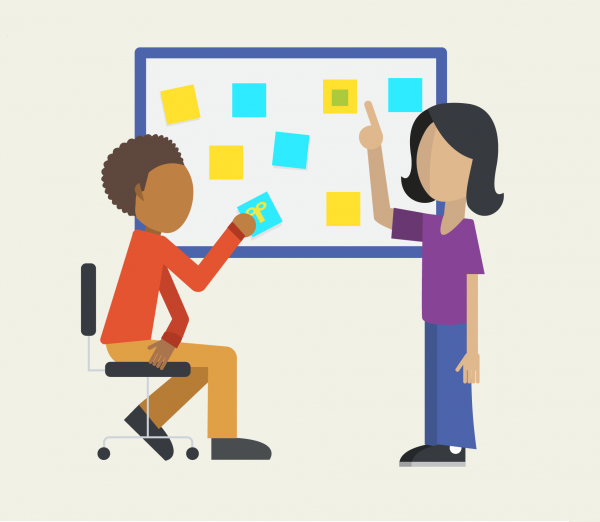
This activity is based on the idea of designing for a specific user and is a good introduction to the methodologies of human-centered design. This method consists of five steps:
Empathize * Define * Devise * Prototype * Test
What do these words mean? How do they apply to the process of designing something for someone? Why does the user matter so much and how is that reflected in this routine?
It is also important to understand that this is not a process, but a routine of thought. What is the difference between these ideas? How do you apply a routine to your work differently from a process?
This video shows the application of this routine by a design team at IDEO, the company that developed the concept of human-centered design. What other aspects of their problem solving and product design process do you find interesting?
Practice: “ Parts, Purposes, Complexities ” – To practice, use the thinking routine in this project to examine a chair in your home or classroom.
Practice: Complete the “Project Make a Paper Boat ” ( Make a paper boat ) to learn and practice using the “Sprout and capture stage” to scan 3D and using the “MeshMixer” to arrange and edit your scanned models.
Practice: Presentation slides are “media at a glance,” and well-composed slides have many elements in common with billboards.
Read this article on using billboards as guides to designing good presentations , and design your own billboard for something you’ve done in the “Learning Studio”. Use the “Sketchbook” or “Collage” software in the “Sprout Workspace” or use a PowerPoint slide to design your billboard.
Part 1: Identify Design Principles
Part 2: Quick Iteration – Draw your own chair (individually) – Incorporate the 2 design principles that you identified in Part 1. The third principle is that your design should reflect your own style.
Part 3: Digitize and Present
Parte 4: Reflexionar – Piensa con el proceso en el que acabas de participar. Escribe tus respuestas a las preguntas abajo, y después discute con la clase:
Adaptado de Five Chairs Exercise, Stanford d.School K12 Lab Wiki.
Produced by Digital Promise Global with the help of the Open Educational Resources used in this guide. Distributed to Learning Studios schools as part of HP, Inc. and Microsoft’s Reinvent the Classroom. A special thanks to Donovan Snyder for the Spanish translation.
This work is licensed under a Creative Commons Attribution-ShareAlike 4.0 International License . You can share this project or modified versions of it under this same license.